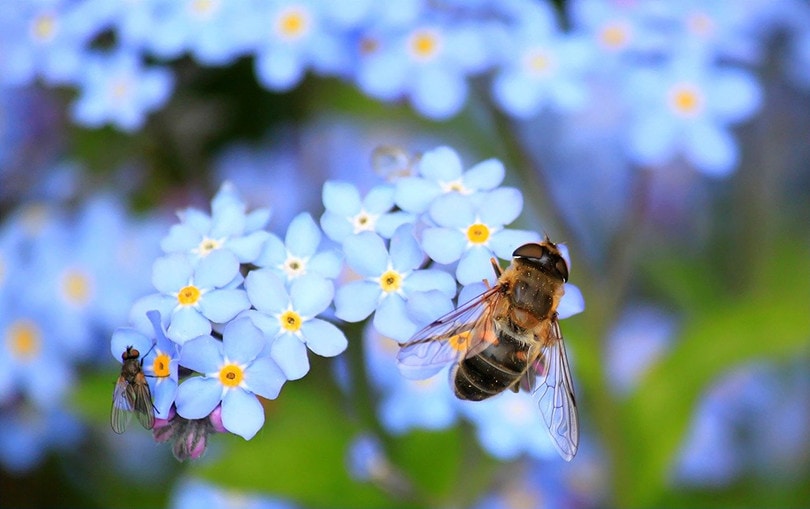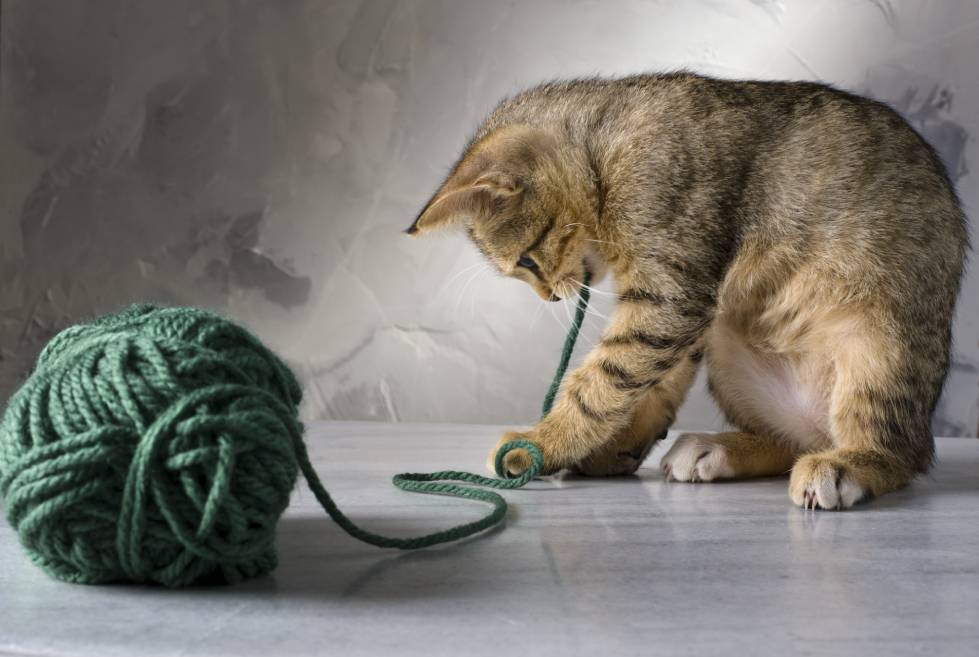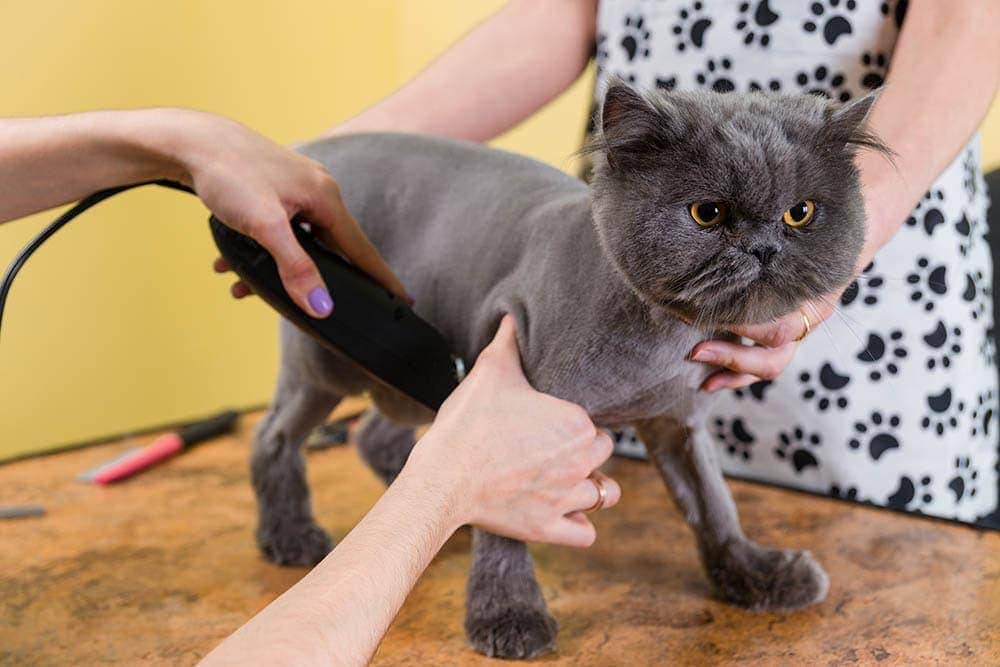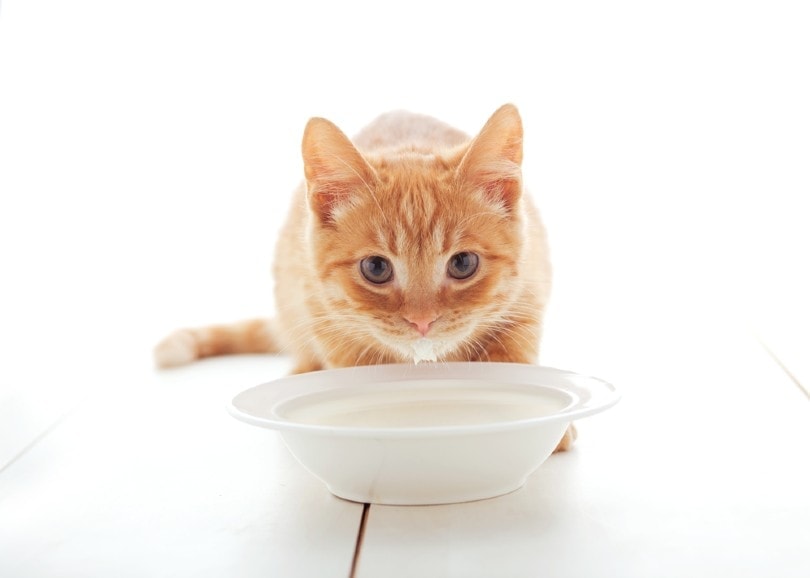Are Forget-Me-Nots Poisonous to Cats? Vet-Approved Facts and Safety Guide

Updated on

Forget-me-nots (Myosotis sylvatica) are perennial plants with vibrant spring blooms. Many homeowners enjoy these plants for both indoor and outdoor use, leading them to wonder if they’re toxic for pets.
Are forget-me-nots poisonous to cats? No, forget-me-nots are not poisonous to cats. In fact, they’re one of the pet-safe plants you can put in your home or garden.
About Forget–Me–Nots
Forget-me-nots are charming, old-fashioned flowers that are prized for their colorful blue flowers that bloom early in spring. These flowering plants tend to prefer cool weather, indirect light, and moist soil, so they’re exceptionally hardy.
Each spring, these plants bloom with delicate blue flowers that have a white or yellow eye. They can be cultivated in outdoor gardens, indoors in pots and containers, or as bedding around wild gardens. The flowers are considered edible according to some sources and can be consumed in trail mix or as part of a salad or garnish.
While most varieties of forget-me-nots are safe for animals, there are some toxic species that look the same. The Chinese forget-me-not (Cynoglossum amabile), also known as the Hound’s Tongue, is a poisonous forget-me-not species. The toxic principles are pyrrolizidine alkaloids. When ingested in large amounts or over a long period of time, this plant has a poisonous compound that can be dangerous for horses.

Plants That Are Poisonous to Cats
Whether you’re keeping houseplants or creating your own backyard garden, it’s important to know what plants are safe for your cats. These curious pets are likely to nibble on and ingest plants, and some plants have substances that can be toxic if your cat comes into contact with them.
Lilies are among the worst plants for households with cats. Because of their beauty, many people keep lilies, but they can cause potentially fatal kidney failure in cats. Even if caught early enough, which is not normally the case, acute kidney failure can mean a long (and expensive) road to recovery.
Some other popular plants that are hazardous to cats include:
- Autumn crocus (Colchicum autumnale): An ornamental flowering plant that commonly blooms in fall and is toxic to cats, dogs, and horses. It’s especially dangerous for cats because of its alkaloid colchicine content, which causes seizures, liver and kidney damage, gastrointestinal upset, and death in cats.
- Azaleas and rhododendrons: These related species of flowering plants and shrubs are highly toxic to cats. All parts of the over 1,000 species of azaleas and rhododendrons can poison a cat, even with a tiny amount, and may cause digestive upset, weakness, heart failure, tremors, seizures, coma, and death.
- Narcissus: This genus of plants includes daffodils, and all variants contain lycorine, a poisonous agent that can cause drooling, vomiting, diarrhea, and abdominal pain in cats. In severe cases, cats may develop heart arrythmia, low blood pressure, breathing difficulty, and convulsions.
- Dieffenbachia: A genus of tropical flowering plants popular as houseplants. All types of dieffenbachias contain insoluble calcium oxalate crystals, which can cause oral and digestive irritation that’s painful for cats.
- Chandelier plant (Kalanchoe tubiflora): A flowering houseplant that contains bufadienolides, which cause gastrointestinal upset and more severe symptoms like heart arrhythmia, collapse, and seizures.
- Oleander (Nerium oleander): A popular outdoor flowering shrub that contains cardiac glycoside toxins, which can damage the heart muscle and may cause symptoms like poor coordination, seizures, tremors, and digestive upset.
- Tulips and hyacinths: Both tulips and hyacinths are part of the lily family and share the same deadly toxins, such as tulipalin A and tulipalin B.
Conclusion
Plenty of common houseplants are poisonous to cats, but fortunately, the beautiful forget-me-not isn’t among them. Only the Chinese forget-me-not varieties pose a risk to cats. Still, it’s important to monitor your pet for signs of distress and try to prevent them from snacking on plants as much as possible. Ingesting a non-toxic plant can still cause GI upset such as vomiting or diarrhea. Often, accidental poisoning from eating houseplants or other toxic substances has the best outcome when caught early.
See Also:
- Are Irises Poisonous to Cats? Vet-Reviewed Facts & Tips
- Is String of Turtles Plant Toxic to Cats? Vet-Approved Facts & FAQ
Featured Image Credit: cocoparisienne, Pixabay










